ZA Lifestyle may be a new and extremely exciting evolution, however it is more of the same for me. Fact is, I’ve always felt an almost magnetic attraction to our wilderness areas. It’s fascinating to see how many of these areas have changed over the years, becoming more accessible and less wild. My first trip to the Okavango Delta in Botswana is a case in point. It was back in the late 1980’s. Ever since reading as a boy, Sir Laurens van der Post’s ‘The Lost World of the Kalahari’, I had a deep longing to travel to this incredible part of Africa.
The Okavango Delta is in the Northeast of Botswana, where seasonal flooding turns it into a veritable Garden of Eden. It spills into the Central Kalahari, bringing respite from the brutal heat for the animals that frequent this wildlife wonderland. The water flowing into the Delta has its origin from the highlands of Angola. By road, it is an 1100k road trip from Pretoria to get to Maun, a large town on the southwestern edge of the Delta. Maun is the springboard to most of the lodges in the Delta.
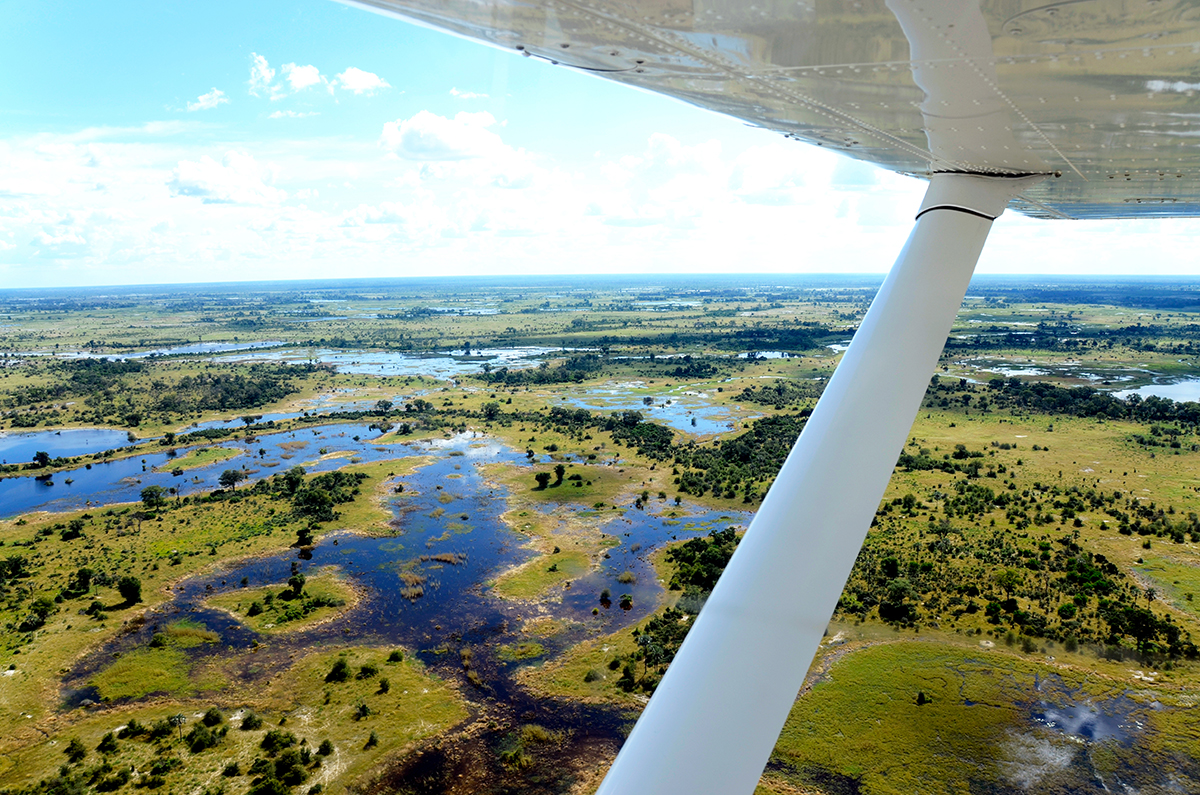
Botswana was a very different country for travellers in the late ‘80’s. Infrastructure was sparse when compared to today. Fuel stations are now reliable, however, in those days there was no guarantee that fuel stations, such as they were, would have fuel. It was a case of ‘fill up when you can’. I planned a trip to Maun over the Easter long weekend, with a couple of extra days tacked on. My mate Johann shared my wanderlust, so it was early on a Thursday morning that we drove out of Pretoria on our first Botswana adventure. We were driving my tiny Suzuki SJ410 Jeep. It was a yellow soft-top model with a 1000cc four-cylinder motor. With its short wheelbase and solid axle suspension it was not the most comfortable little beast or the fastest. Cruising speed was in the order of 95 kph.
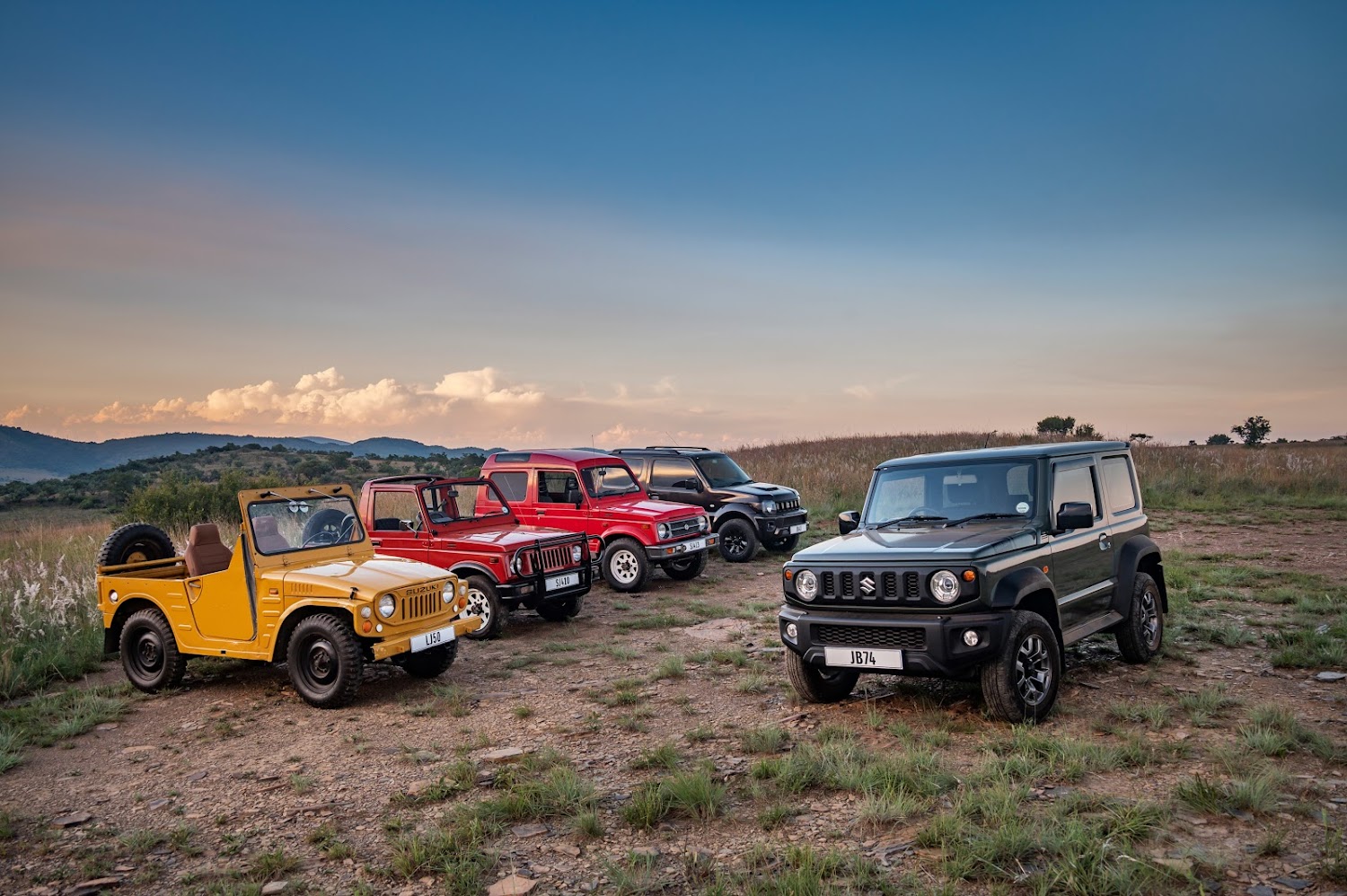
The plan was to camp, so I had removed the back seats and put a 6” layer of sponge down to cushion the goods we were carrying. The last thing we needed was broken beer or whiskey bottles in our cooler box, not to mention pre-scrambled eggs! Our plan was to make the border at Martin’s Drift, where Johann’s sister lived close by, overnight there and then continue our journey the next day. About 300 k’s from home, I jokingly asked Johann if he had his passport. He looked totally aghast, and it dawned on him that he had omitted to bring it. Well, we did a U-turn, and our short day became a very long day! Just before midnight, after 1000k’s of bouncing in the little Suzy we pulled into his sister’s yard, feeling somewhat second-hand.
The next morning early, we were up and through the border and on the road to Palapye when I realised that I had forgotten to put in fuel after our marathon day. 10 k’s short of Palapye the tiny Suzy stuttered, gasped, and came to a fuelless stop. While Johan curled up in his sleeping bag next to the Suzy I hitch-hiked to town, very kindly picked up by a schoolteacher who also took me back to my stranded beastie with a can of fuel. My first interaction with the locals was thus very positive. With tar roads all the way to Nata, we arrived in the late afternoon, realising we had no chance of making it to Maun which was still 300 k’s away. It was also 300 k’s of a rutted, sandy, and corrugated white calcite track. A far cry from the road that exists today. Even at its potholed in places worst, it is a superhighway compared to back in the ’80s. It was, consequently, incomparably wilder. I had my first experience of Nata Lodge, which in those days was privately owned. It was a wonderfully welcoming place. We sat on a slasto paved area under tall and shady trees and sipped on our first ice-cold St Louis beer. We were properly hot and bothered as the little Suzy had no aircon. Thinking back, it was somehow more real. Africa has always been a sensory overload and in those days, it was even more so.
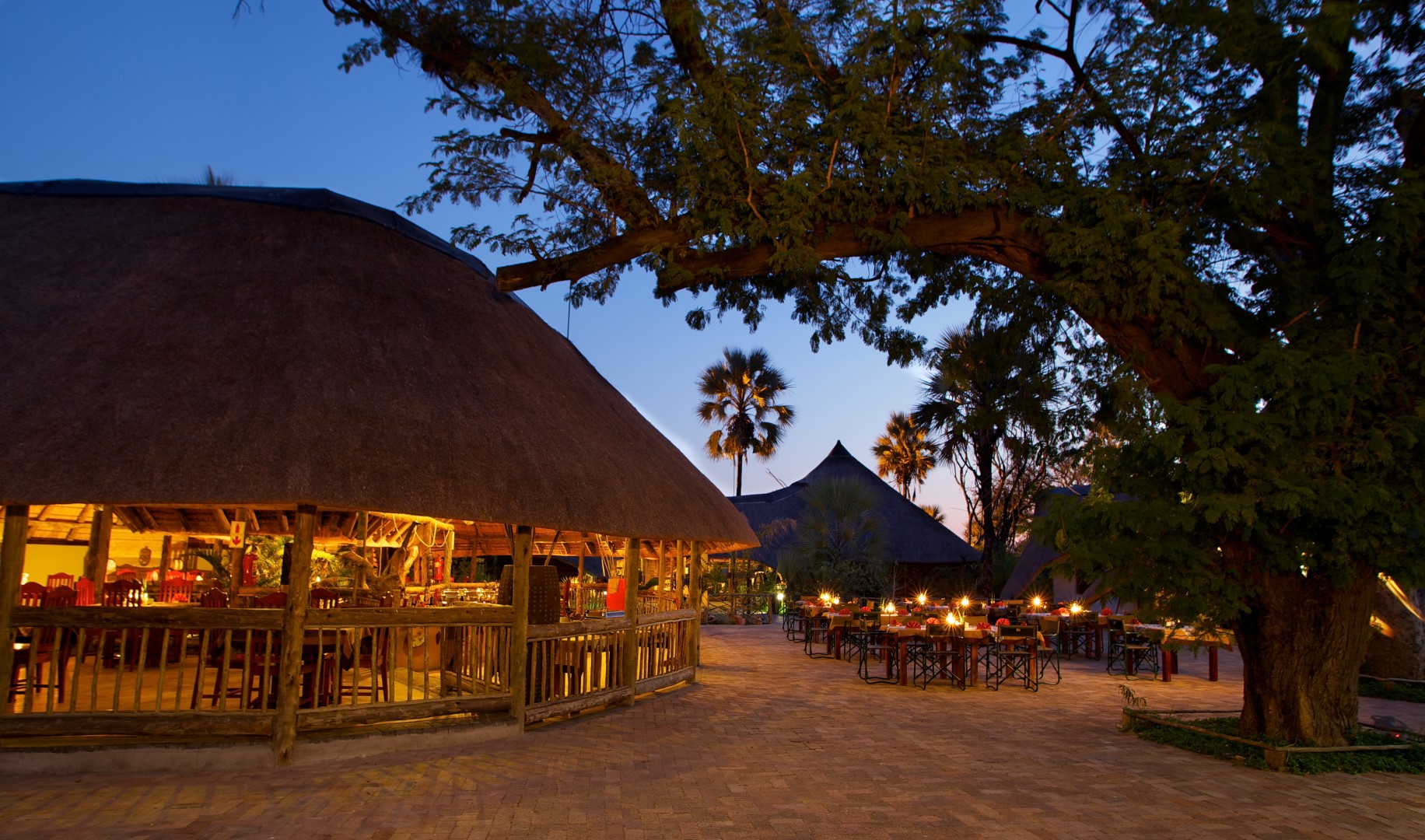
We got excited, and if the truth be told a little apprehensive at the prospect of a night of free camping on the Makgadigadi pans. We drove 30 odd k’s from Nata before pulling the Suzuki a few hundred metres off the road and out of sight, before setting up camp. Nobody ventured down that shocking road at night, so it was totally devoid of traffic. I pitched my 3-man First Ascent tent while Johan got a campfire going. What followed was an epic evening under the vast African skies. The sun set onto the dusty pans creating a spectacle of colour as pinks faded to mauve and the angry sun gently softened and kissed the earth goodnight. Unsullied by any light source, the stars hung like jewels in the cloudless sky. We braai’d some chops whilst sipping on still cold beers and Johan introduced me to a method of cooking veggies which I still use on occasion. He produced an old biscuit tin with a tight-fitting lid, tossed in our veggies, added probably a tot of water, then put it adjacent to our coals, turning it from time to time. The result was baked potatoes, butternut and marrows which complimented our chops to a T. Why is it that meals enjoyed in these surroundings generally taste so good?
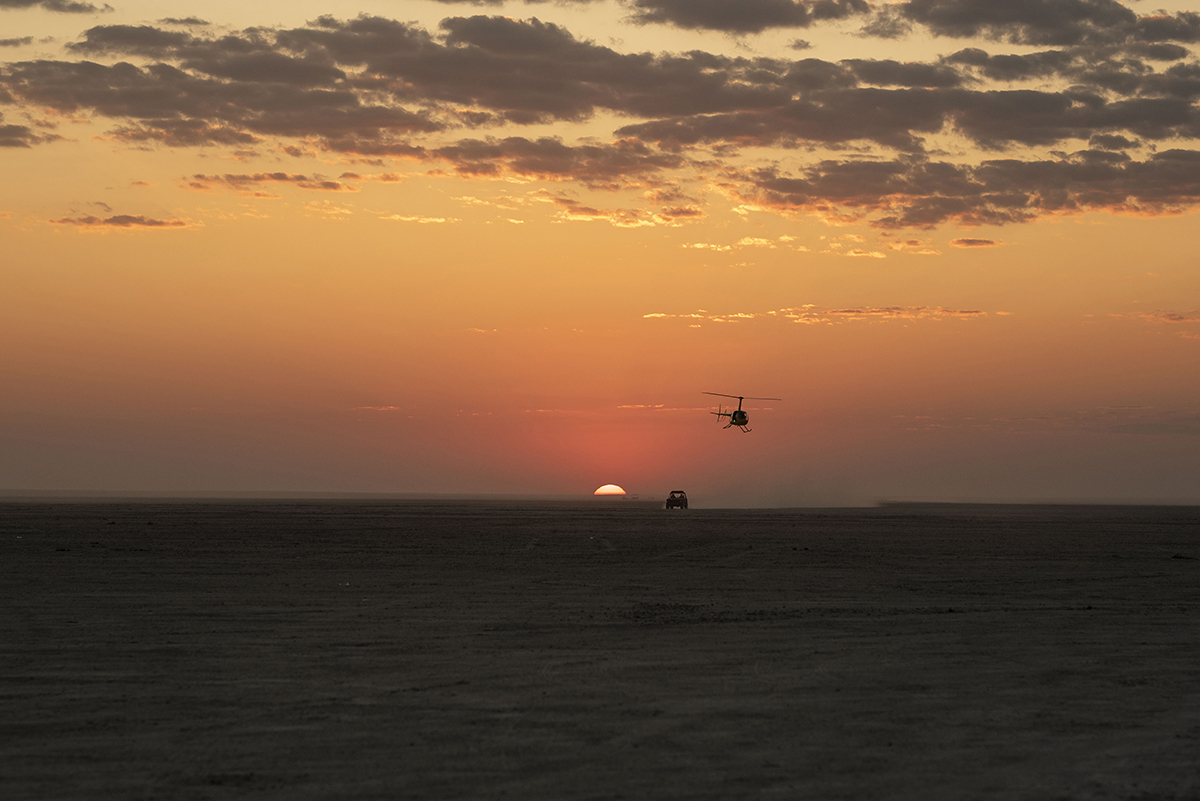
The night sounds compliment and add to the unique atmosphere that is an evening in the African wilderness. At the top of the list of sounds is categorically the roar of a lion telling the world that you are venturing into his Kingdom. We settled onto our blow-up mattresses accompanied by the sound of lions roaring, hoping against hope that our little tent would be foreign to them if they came calling. Sadly, lions are no longer prevalent this far south anymore. We enjoyed a peaceful night occasionally woken by the indistinguishable bush sounds that are such a part of the African bush. It is always a bit of an adrenalin-pumping moment to leave the sanctity of the tent for a call of nature. You carefully scan your surroundings by torchlight before doing your business.
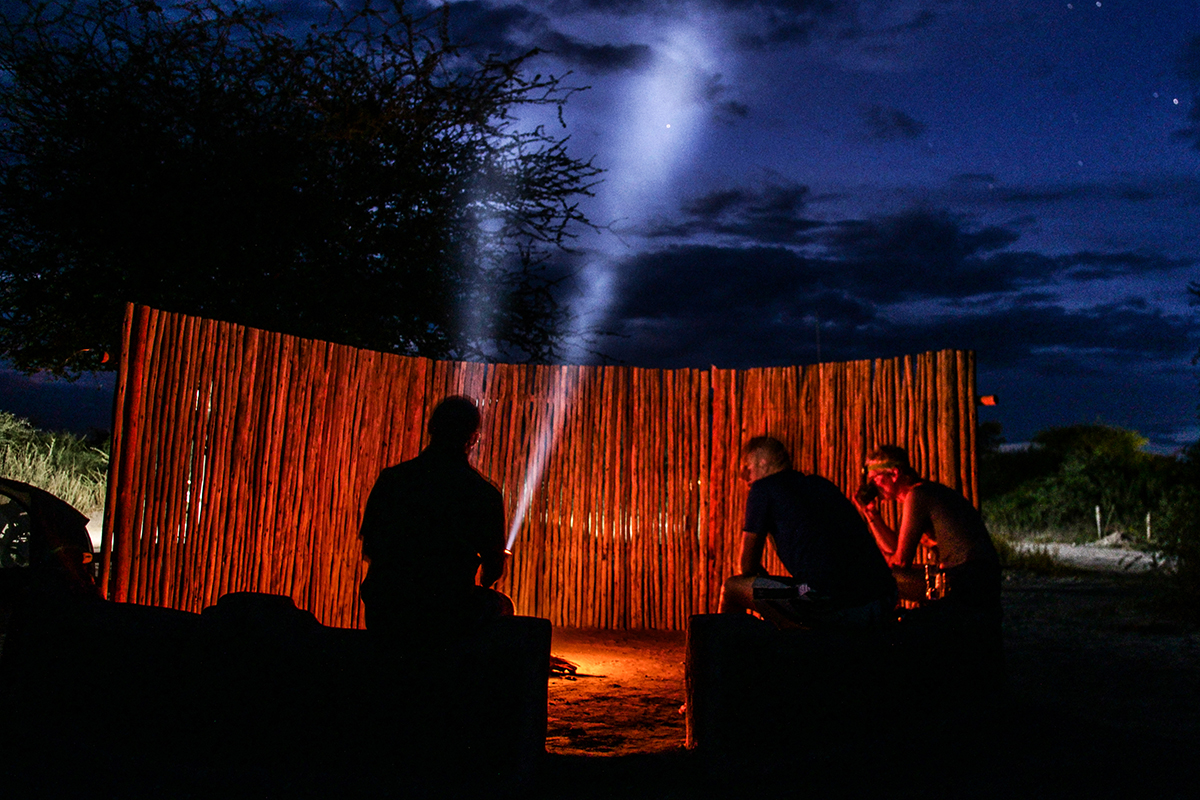
The new day dawned with a soft and cool morning light that also has a way of banishing all elements of apprehension lingering from the night. Today was the day that I would at last get to experience Maun for myself. We packed up and got back onto the calcite track that led to Maun. Kudu, wildebeest, zebra, and giraffe all noted the tiny Suzy’s passing as it scuttled and bounced along. A Tawny eagle sat its perch next to the road until we were almost adjacent before taking flight. Despite the beating that the road was dishing out, we were enthralled by the wildness of it all. This was an Africa that I had read about but never experienced for myself. It took us almost six hours to do the 270 k’s to Maun. The old calcite road entered Maun some way north of the current tar road.
The Maun of today is a very different place from that of the ’80s. The town centre was dominated by the dirt landing strip that was the lifeline of the Delta. Bush pilots would ply their trade, flying visitors and provisions to the remote camps in the Delta. The town itself was a tiny settlement with dusty streets wide enough to allow passage to Cessna’s to taxi from the strip to Riley’s garage, where they would fill up their tanks from the dedicated Avgas pump. Next to the strip was the social centre of Maun, comprising a legendary pub called ‘The Duck Inn’. The beers were always properly cold, and the food was good and reasonably priced. It was run, if my memory serves me, by a German woman named Gaby. It was the spot frequented by all the safari operators and had a notice board where folks would leave messages for travellers in and out of the Delta. It was typical of the ‘make a plan’ attitude of the time before social media destroyed our peace and quiet. The Duck Inn was where you went to wash the calcite dust from your throat and get the lowdown on how Maun worked and what was happening in the Delta.
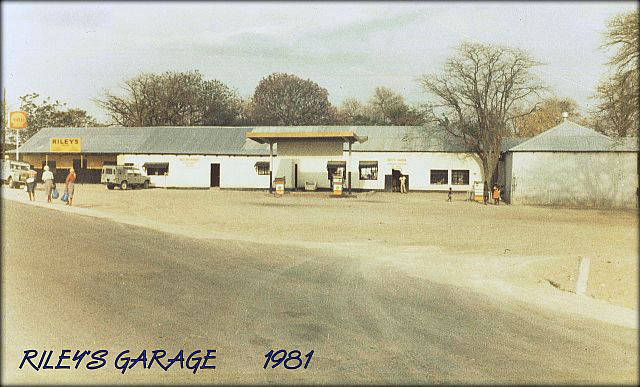
The lodges that existed at that time were generally dotted along the banks of the Thamalakane river that runs through Maun, then splits into the Boteti and Nhabe rivers that flow into Lake Ngami and as far southwest as Rakops, adjacent to the Central Kalahari. The amount of water flowing through Maun depends on how good a rain season happened in the Angolan highlands. This water literally takes months to reach the Okavango Delta. We first attempted to set up camp at Audi camp on the west side of the river but were thwarted by the amount of Devil’s thorns scattered everywhere. We eventually gave up and crossed the bridge to Island Safari camp, where we pitched our tent under huge shady trees. We parked the Suzi then arranged for a poler to take us on a two-day trip into the Delta itself, where we would camp on islands at night. We were taken out to Mokoro Island by motorboat, from where we would depart in a dugout canoe called a Mokoro the next day.
At the crack of dawn, we were being poled into the Delta through the channels between the islands. The poler stands on the back of the mokoro and, using a rather flimsy pole with a fork on the end, he punts the mokoro along at a steady speed. We had all our provisions for two days in an army ‘trommel’, as well as our tent and sleeping kit. It was a stark contrast to bouncing along in the Suzy. We glided silently along the channels, past animals not spooked by our progress. Tiny Malachite Kingfishers clung to reeds and Fish Eagles heralded our arrival with their distinctive and haunting calls. In the late afternoon, we found a suitable island on which to set up camp. Our polar would throw out his net while we were pitching our tent, and in no time come back to camp with a catch of sizeable bream.
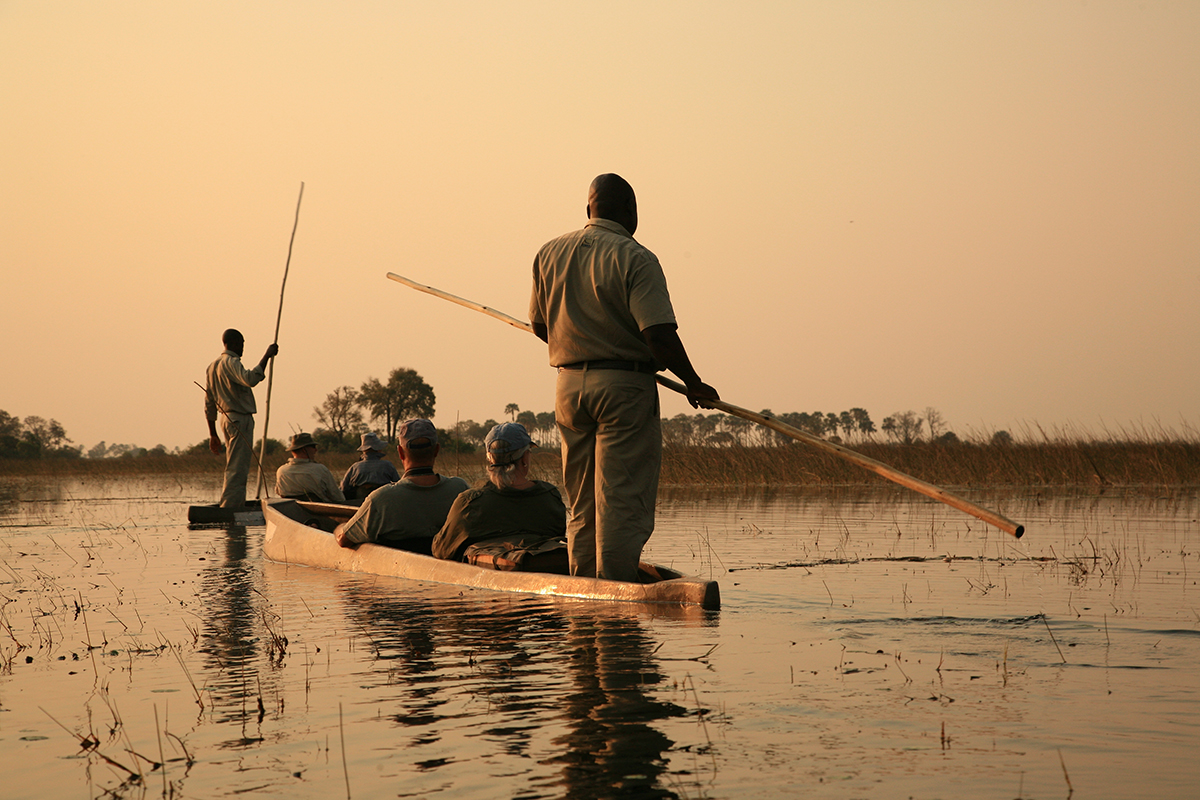
Cleaned and gutted, we stuffed the fish with tomato, onion, and garlic, wrapped them in tin foil and popped them on the coals. We gave our poler mielie meal which he cooked in his three-legged ‘Mandela microwave’. The sun was all but set when another Mokoro arrived with a rather sunburnt couple and their poler. Turns out it was a British optometrist and his girlfriend roughing it on an African adventure. They hastily put up a tiny tent then, virtually in darkness, took out some freeze-dried hiking meals. By this time our dinner was cooked, and they were almost salivating with hunger. As is the way of travellers in foreign lands we invited them to join us and we had a magnificent evening eating delicious fish and ‘sadza’, washed down with whiskey and swamp water. They were blown away by how chilled we were in the bush. Africa is quite a daunting place for kids who have grown up in London.
The Delta in those days was totally unspoilt, as only the hardiest travellers with appropriate vehicles, ever made it to Maun. In addition, the waters that flooded the Delta annually would remove all signs of human habitation. Climbing out of your tent in the early morning would reveal an absolute wildlife spectacle. Wild animals of every description dotted the islands in abundance. Elephant, buffalo, lechwe (an antelope common to the Delta with splayed hooves for traversing swampy ground) giraffe, kudu, sable, rhino, leopard, lion, and hyena to name a few. Ever present and to be avoided at all costs are hippos and Nile crocodiles. We did several game walks on the islands. Some of the islands are huge. It would take a couple of days to cross them. Our poler would guide us with an axe over his shoulder. I don’t know if that was for our protection or to put us out of our misery if attacked by some beast!
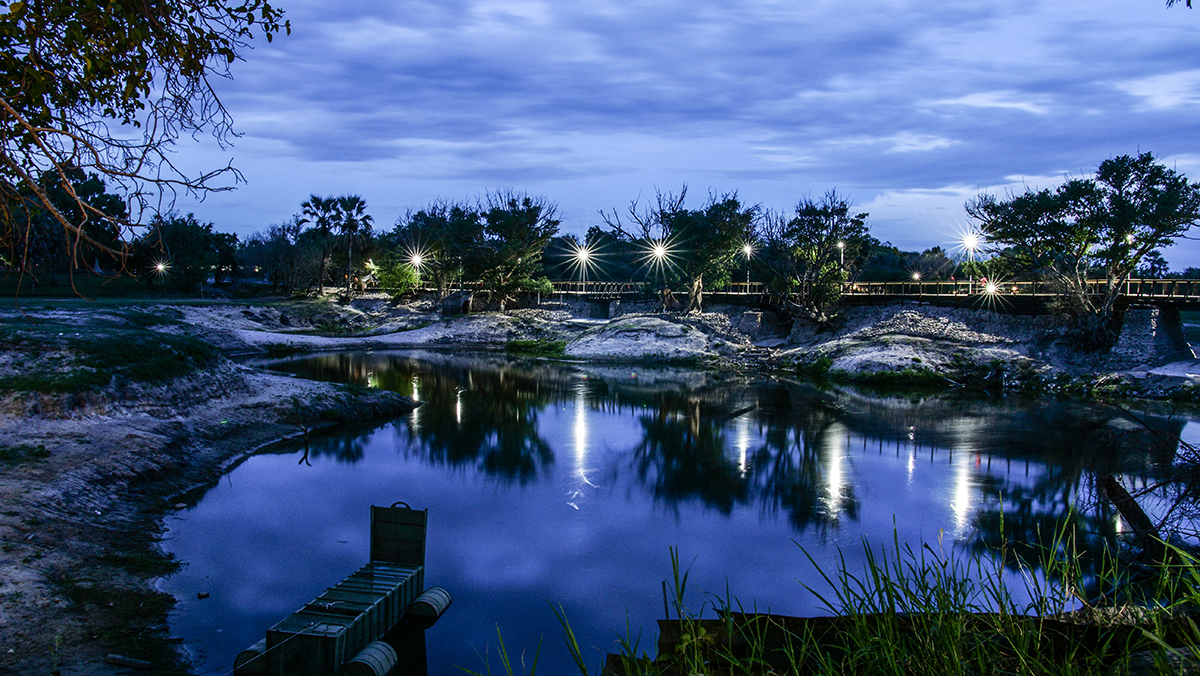
Returning to Maun after two days in the Delta we partied up a storm with some Tuks students who had arrived in the interim. Surrounded by some nubile students, Johann played his guitar, smoked his Texan plain and sang, while we warded off dreaded dehydration with numerous Captain Morgan’s and coke. I am talking ‘proper’ Coke! This was before the world went crazy. Today it would be diet Coke and vaping. The balmy atmosphere in the Delta at Easter time is amazing. Warm days and comfortable nights. It was a reluctant pair that loaded up the Suzy and tackled the long road home. Botswana made an indelible impression on me. It is one of the last places where wild animals still roam largely free. I have subsequently been back many, many times, revelling in introducing friends to this stunning land. I have witnessed Maun grow into a vibrant modern town with all the creature comforts that come with that. It has expanded so much that it is hard to imagine the tiny dusty town of the ’80s. There is even a Woolies in town now!
Despite the ‘modernization’ of Maun, it is still the springboard into the Delta. Sitting at an eatery just down from the airport you hear any number of foreign European languages spoken, interlaced with a smattering of yanks too. What is surprising is how few South Africans visit these natural wonders despite it being on our doorstep, relatively speaking. We certainly have our fair share of challenges living in SA today, however, we also have access to some of the most amazing places on the planet. Take this journey with us as we travel far and wide using all the latest goodies that make ‘roughing it’ a pleasure. We look forward to sharing it all with you.




